This NASCAR V-8-powered Ram is a 200-mph Club taxi
One of the most storied institutions in land speed racing is the 200-mph Club. Not affiliated with the Southern California Timing Association (SCTA) that runs Speed Week, the exclusive club is for drivers who have not only clocked a flying mile speed in excess of 200 mph, but who have set a record at the same time. That means two 200-mph passes, on the same measured mile, on two consecutive days. It’s even more difficult than it sounds.

Wayne Jesel, the founder of the eponymous valvetrain company, has put his engine expertise to the test to help put 10 drivers into the 200-mph Club, himself included, using this Dodge Ram Quad Cab. Jesel had a NASCAR team from 2001–03, and when the big sponsorships dried up, he left the sport but still had some cars with potent Dodge NASCAR V-8s. He and his friends took a car, recently retired from NASCAR, to run in the East Coast Timing Association’s Ohio Mile event. Held on airstrips, the mile-long race has a class for former NASCAR rides. That got Jesel hooked on land speed racing, and he soon turned to the salt. There was just one problem. The SCTA, the sanctioning body that runs land speed events at Bonneville, doesn’t have a class that would accommodate a retired NASCAR racer. Besides streamliners and lakesters, the SCTA wants race cars based on production models.
After visiting Bonneville in the early 2000s, Jesel noted that some of the most successful racers making passes on the less-than-ideal salt surface had a lot in common. “The only thing getting down the track were vehicles that were wide, long, and heavy,” Jesel says. With that in mind, Jesel and his friends put their heads together to see what they could build to take on records in several classes. It just so happened that while they were scheming, an acquaintance who was building engines for Petty Enterprises had a Dodge Ram Quad Cab up for sale. The truck had a straight body and seemed to be solid; it was also a Dodge and would match the NASCAR engines Jesel had in ready supply. After looking at the SCTA rulebook, Jesel decided that they could make an excellent race truck out of the Ram and began the build, with NASCAR crew chief Del Markle handling the suspension, brakes, and roll cage.
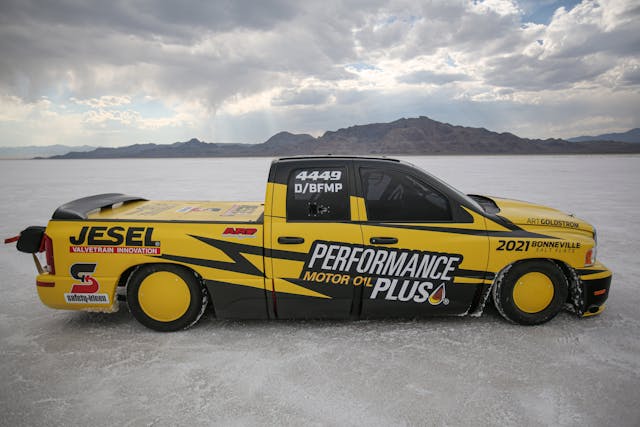
The 5.9-liter engines used in NASCAR rely on a high-revving combination of huge bores and short strokes to deliver nearly 900 hp at more than 9000 rpm. That’s enough power to easily push a slick NASCAR Charger to speeds in excess of 200 mph, but a Dodge Ram is an entirely different animal. Frontal area is your enemy in land speed racing, and the massive hole that a Ram 1500 punches through the air poses a major hurdle in achieving 200+ mph speeds. “It’s got more than 32 square feet of frontal area,” Jesel says. “That’s more than a 4×8 sheet of plywood!’ When Jesel first campaigned the pickup in 2006, it used nothing but an extended lower air dam, as the SCTA’s Production class rules don’t allow any other modifications. The truck ran alright, but Jesel knew there was plenty to be gained in terms of aerodynamics.

Dodge invited Jesel to use its wind tunnel in Auburn Hills and test the factory aerodynamic pieces designed for the Ram SRT10. As it was raced, in the non-SRT configuration, the truck recorded a coefficient of drag of .34. That’s not terrible for a pickup, but as each piece of the SRT body kit was applied, drag dropped. First, the front bumper was tested, then the rocker molding, then the rear bumper, and finally the wing. Bit by bit, the coefficient of drag was whittled down to .27, an admirable feat that corresponds with many modern sedans and coupes. Combined with the frontal area, that coefficient of drag means the Ram has a total aerodynamic drag similar to that of a Ford Crown Victoria. Much more manageable.
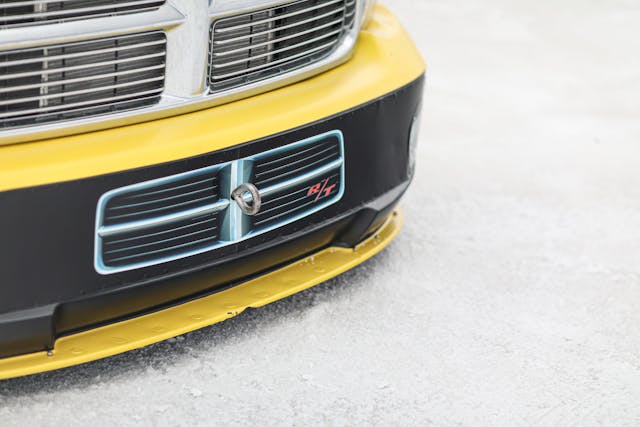
Results in a wind tunnel are one thing, but what about on the salt? Jesel reports that the driving characteristics of the truck were, “a lot better. It created a lot of downforce without a lot of drag. At about 220 (mph) it gets a little bit of hesitation. It’s holding back and maybe moving around a bit. All of a sudden you break through it.”
The Ram has a lot of motivation to push through the air, thanks to a series of NASCAR surplus engines built by Bob Cave. Initially, Jesel used a bit of extra bore and stroke to turn the typical NASCAR 358-cubic-inch V-8 into the upper realm of the C-class displacement with 370 cubic inches, but he has competed using smaller engines since then, including this year’s attempts.

Last year was the first year that the Modified Pickup class allowed participants to run on fuel. Race gasoline is sold on the salt and all competitors running a gasoline class must fill up with that gas and have their tanks sealed to prevent tampering. Fuel classes, on the other hand, can run just about anything that will burn, including alcohol and nitromethane. Adding nitrous oxide also bumps a car into the fuel class. However, you can also run any race gasoline you’d like, and since the Ram’s engine has been tuned to run on race gas, that’s what Jesel and his team use, whether they compete in the gasoline or fuel class, making it easier to challenge multiple records in a single Speed Week. As shown, the D-class engine runs a 4.185-inch bore and a 2.68-inch stroke for 293 cubic inches. Running low boost levels still returns about 1600 hp.
The fuel is stored in a cell mounted in the bed, just behind three boxes of lead ballast and ahead of the also-heavy battery.

Also sharing space under the hard tonneau cover is the oil tank for the engine’s dry-sump system. The tolerances in the engine are so precise that the team uses an oil pre-heater to warm the engine before it ever fires up.
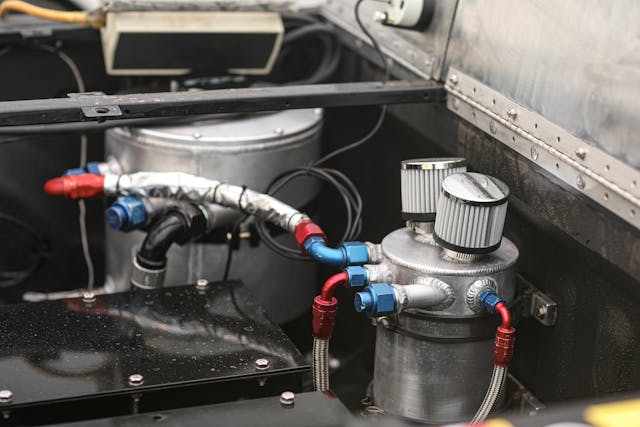
For its latest mission to deliver a driver into the 200-mph Club, the team disabled a cylinder on the 293-cubic-inch V-8 to move from the D-engine class to the E-engine class, effectively turning it into a 256-cubic-inch V-7 to compete in the next engine class down (you can learn more about Bonneville engine classes here). Jesel asked the Bonneville tech inspectors, “If I wanted to take out a cylinder to run the next class down, what would I have to do?” They told him to remove the rocker arms from a cylinder and that would be good enough for them. So the Jesel team removed two rocker arms, along with their pushrods, and rotated that piston’s pair of lifters 180 degrees. Due to the lifter’s keyway no longer allowing the lifter to slide down, it kept the lifter on top of the bushing and prevented the lifter from contacting the cam while keeping the oil holes plugged so that oil isn’t gushing into the valley. Just to be safe, the team also grounded that cylinder’s plug wire to prevent any arcing and removed the spark plug and threaded in a hose, the kind you’d find in a compression tester, to vent any errant blow-by. Of course, they also removed the lead from the injector so that the dead cylinder wouldn’t receive any fuel. “You’d never know it was running on seven cylinders,” Jesel says.
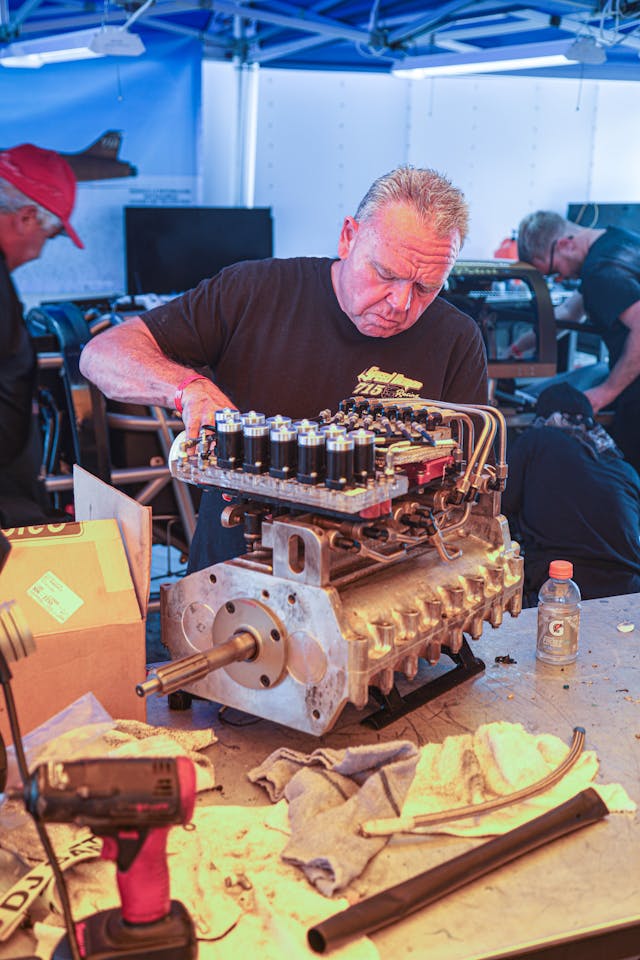
Steve Watt, the crew chief of Speed Demon team streamliner, took the wheel for this attempt and ran on Thursday and Friday to reach an average E/BFMP record of 241.463 mph, making him the 10th driver to get into the 200-mph Club using the Jesel team’s Ram, the second that week after Jason McOlgan’s 232.700 mph record in D/BFMP.
Jesel has another driver in mind for the SCTA’s next meet this fall, and the team will continue to be a force in the Modified Production class, getting more drivers into the 200-mph Club than any other pickup on the salt.
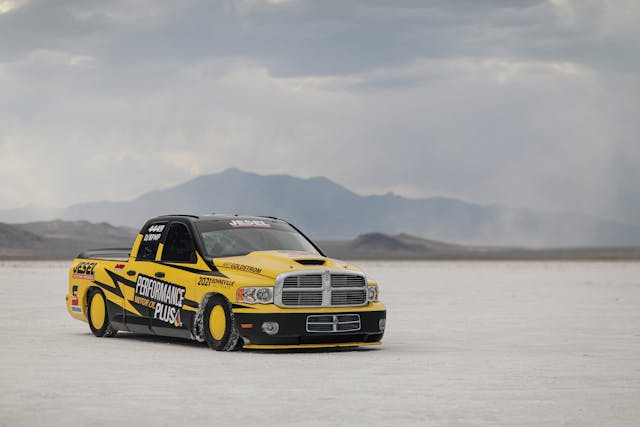
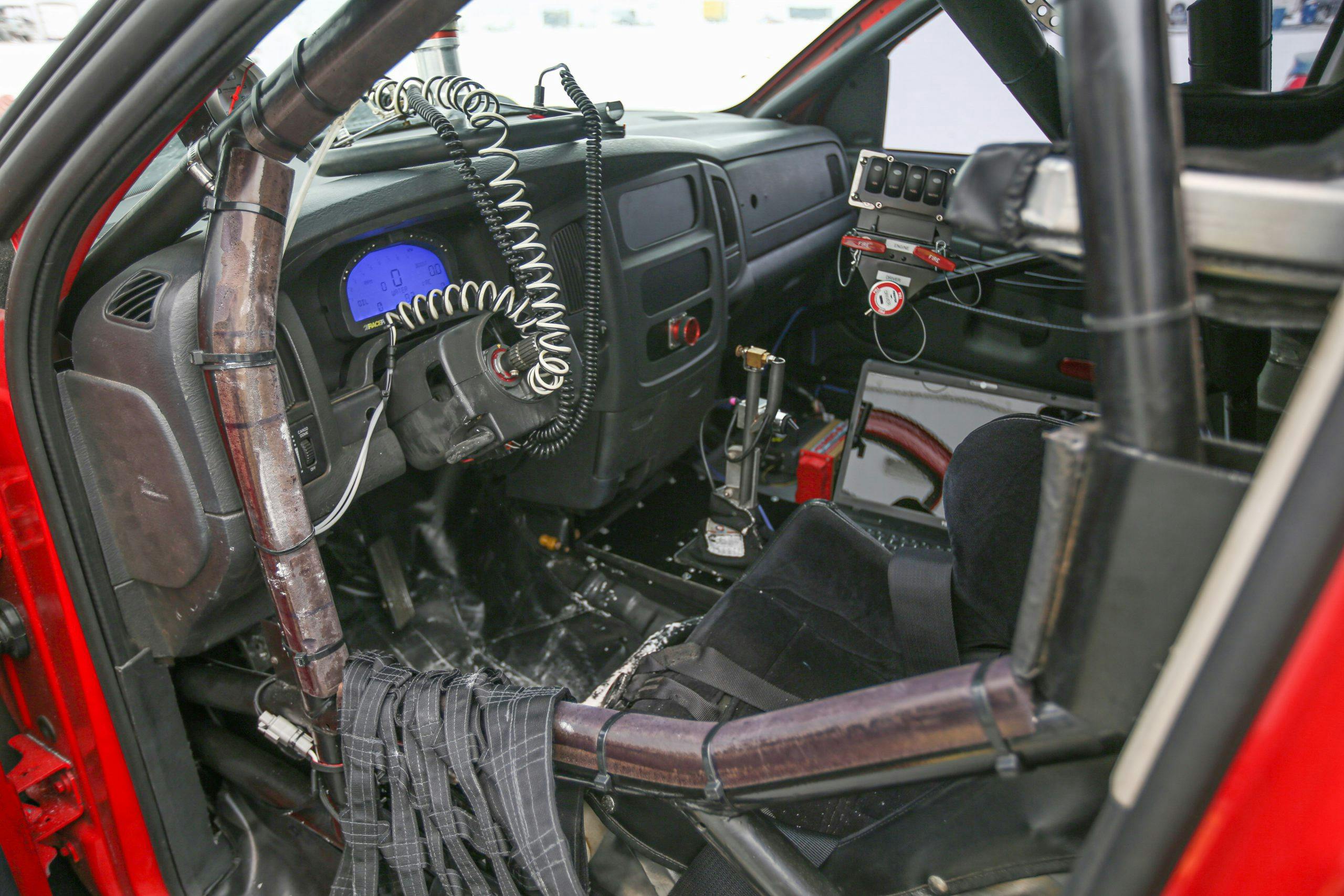
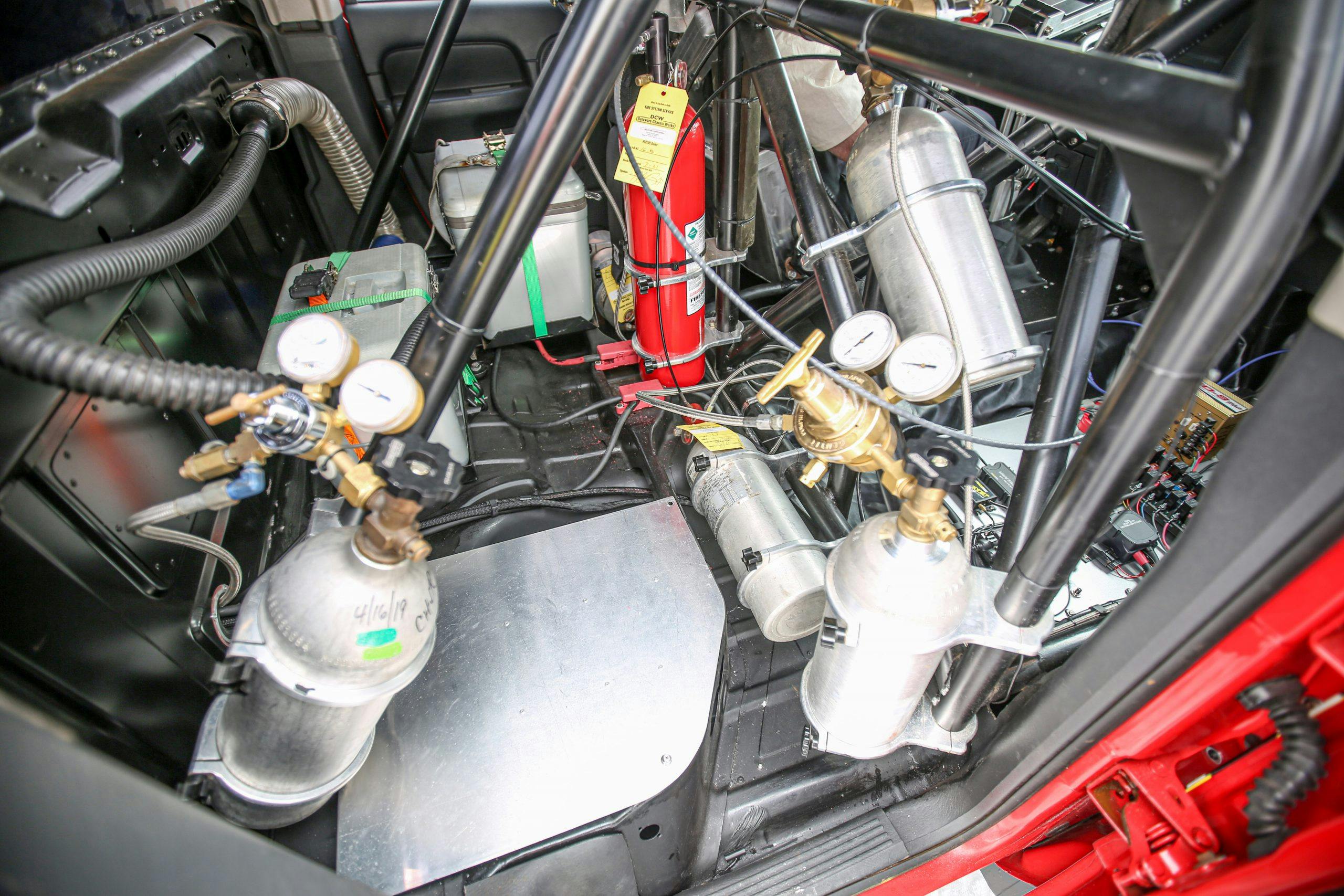
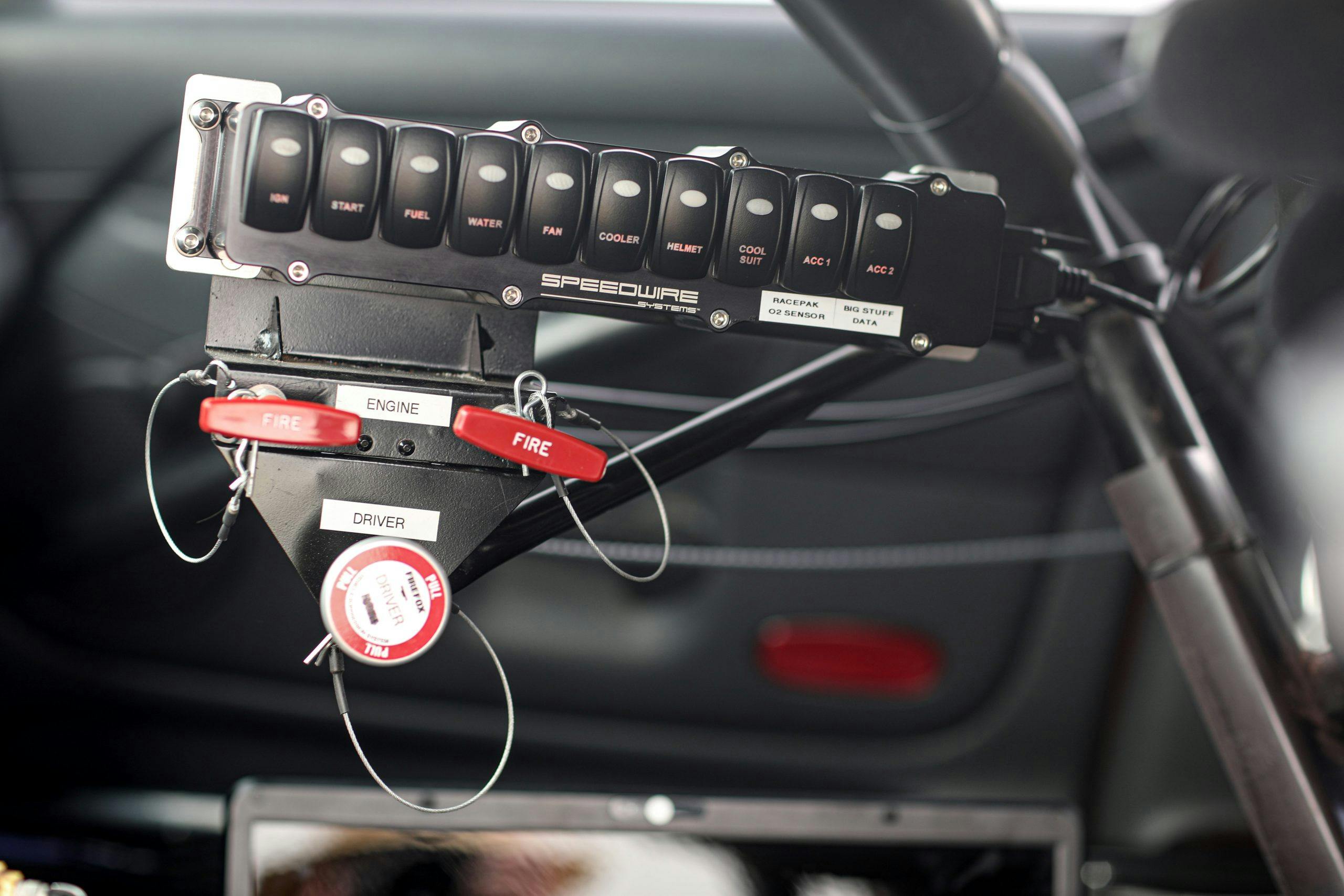
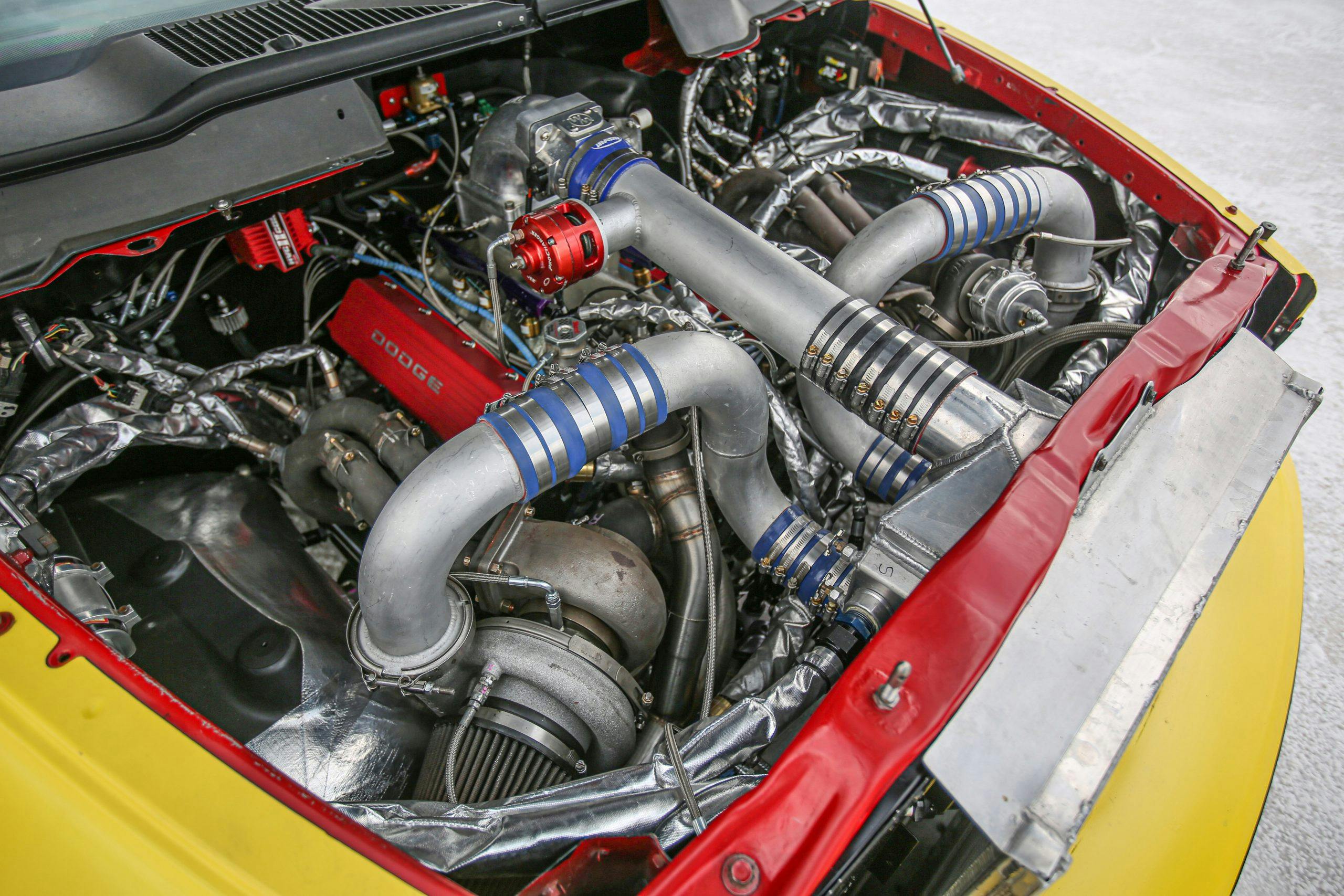
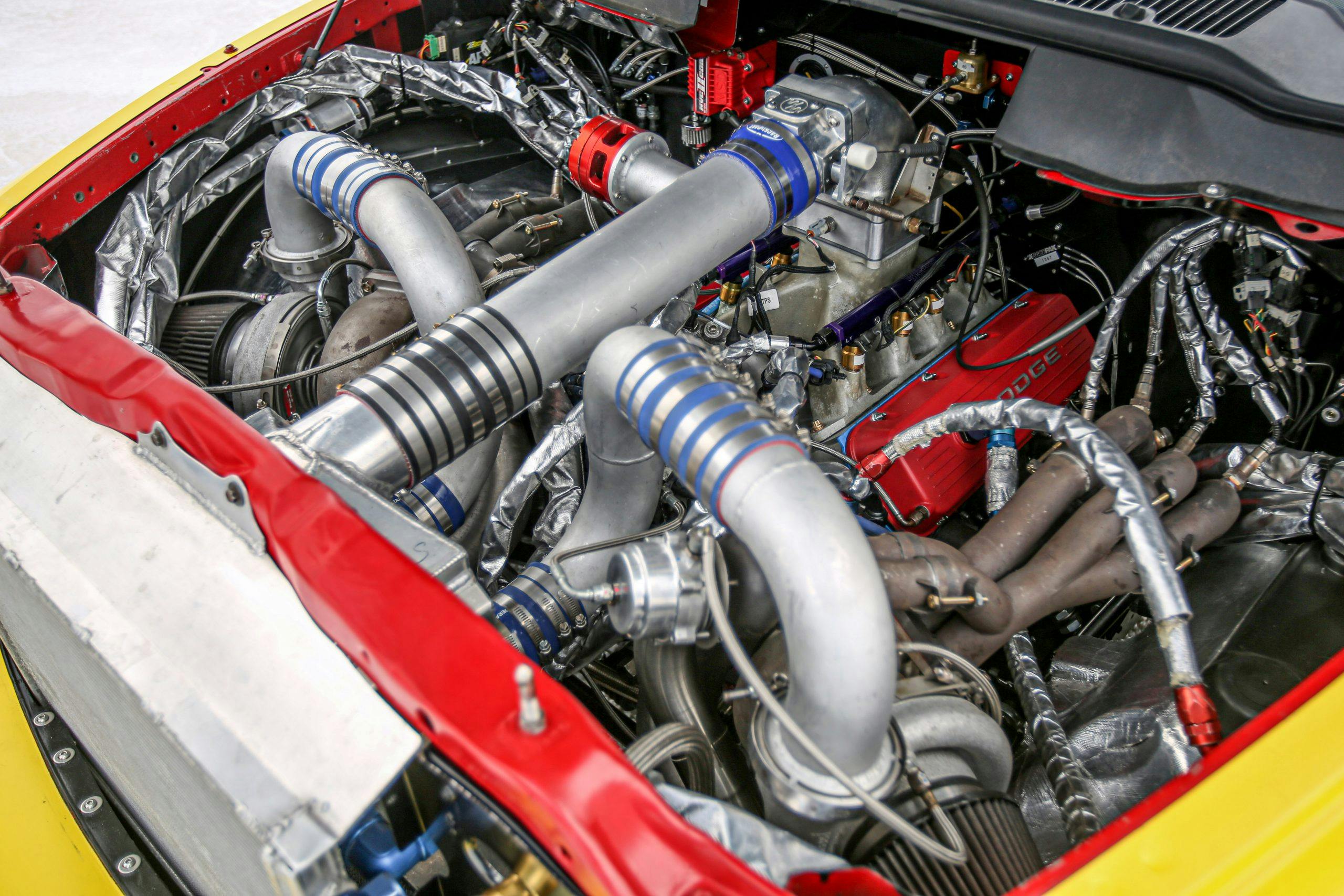
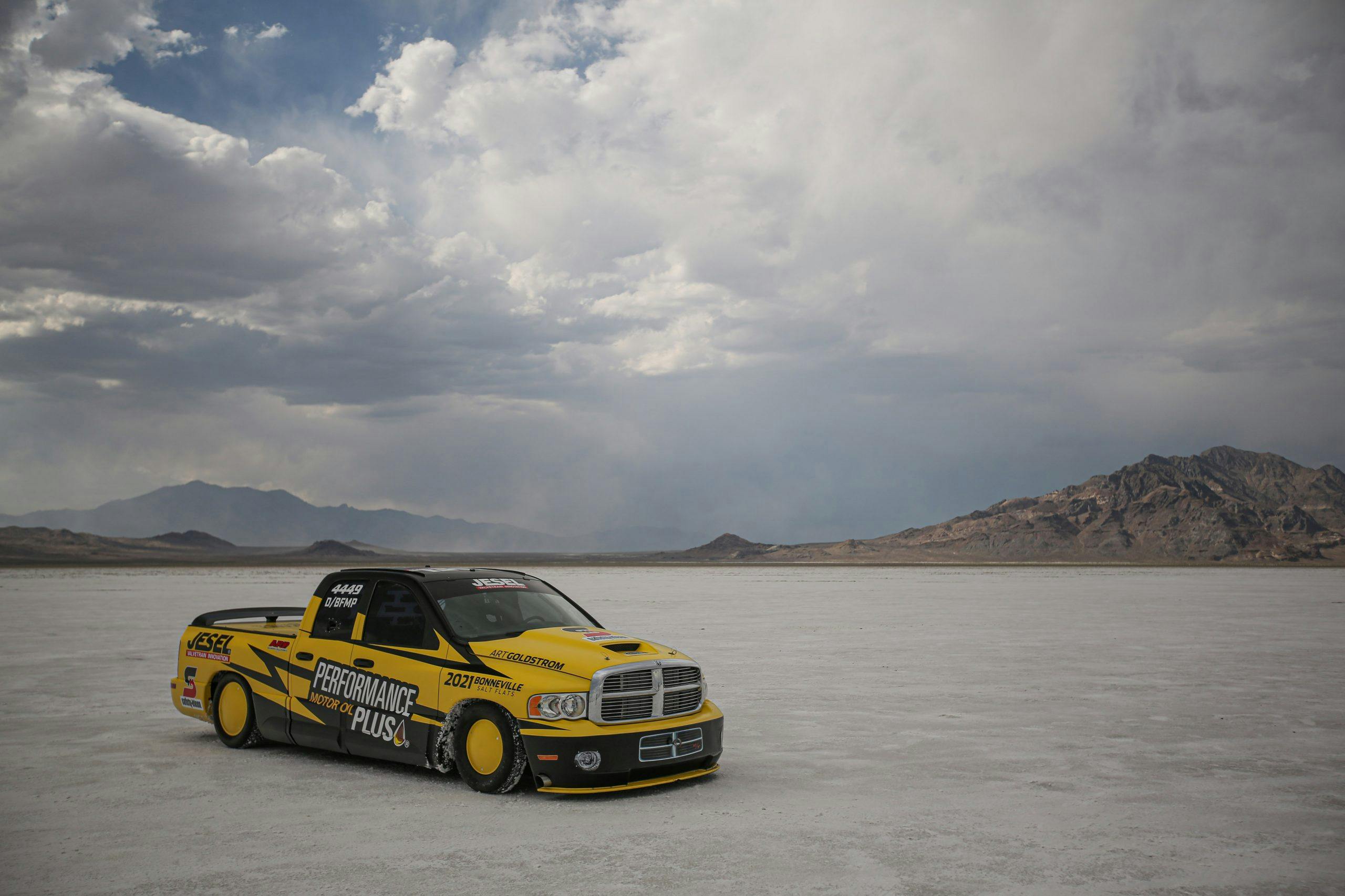
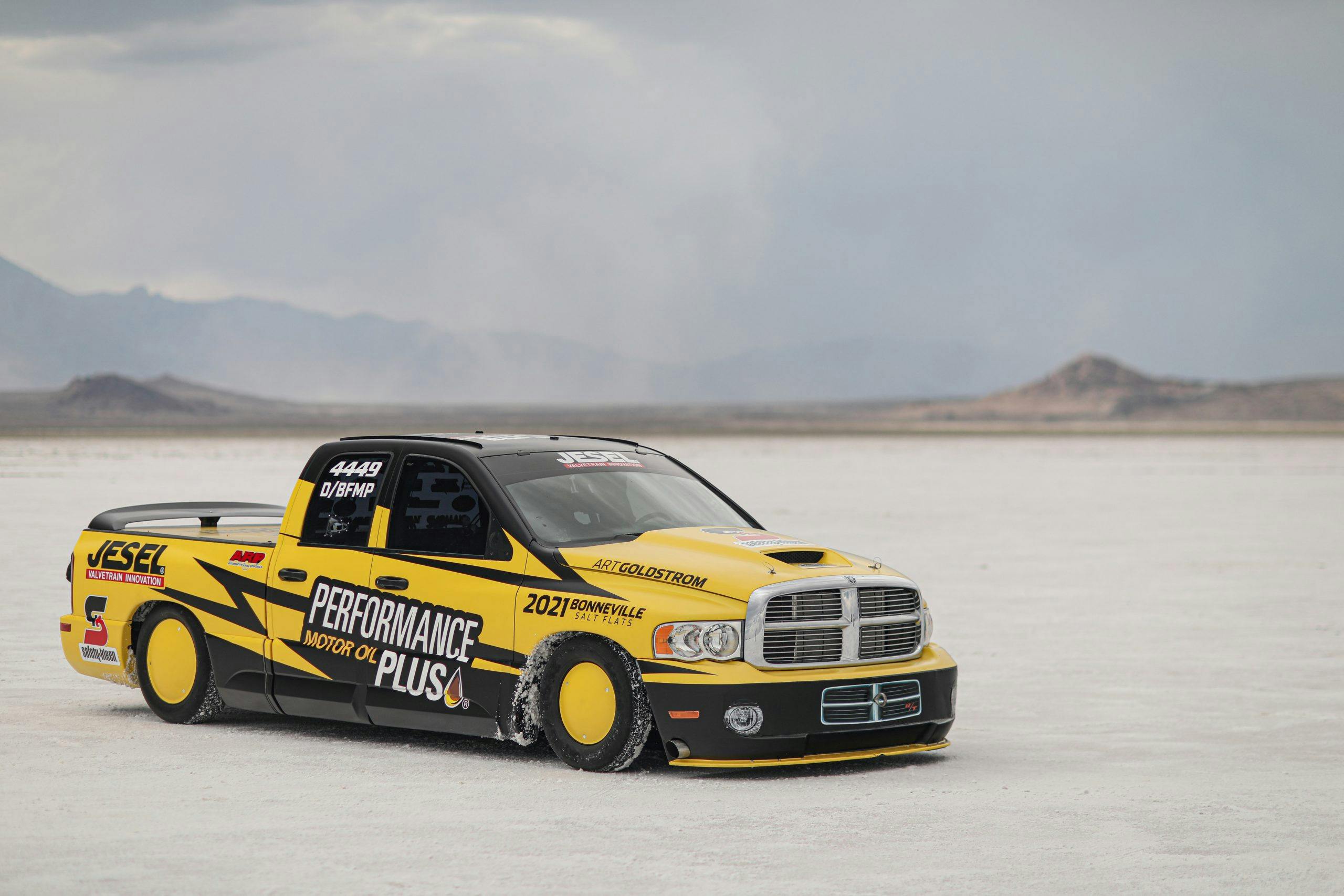
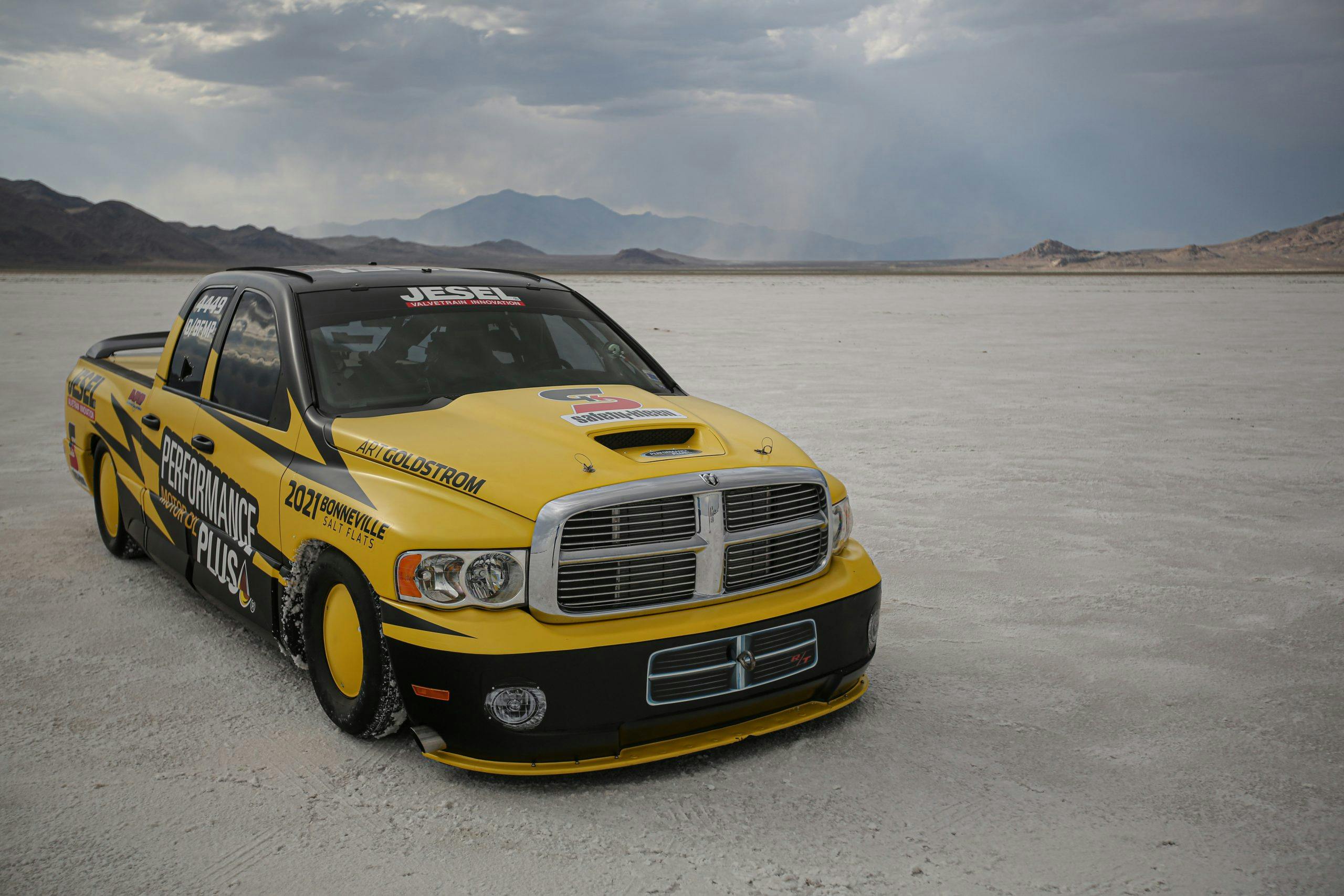
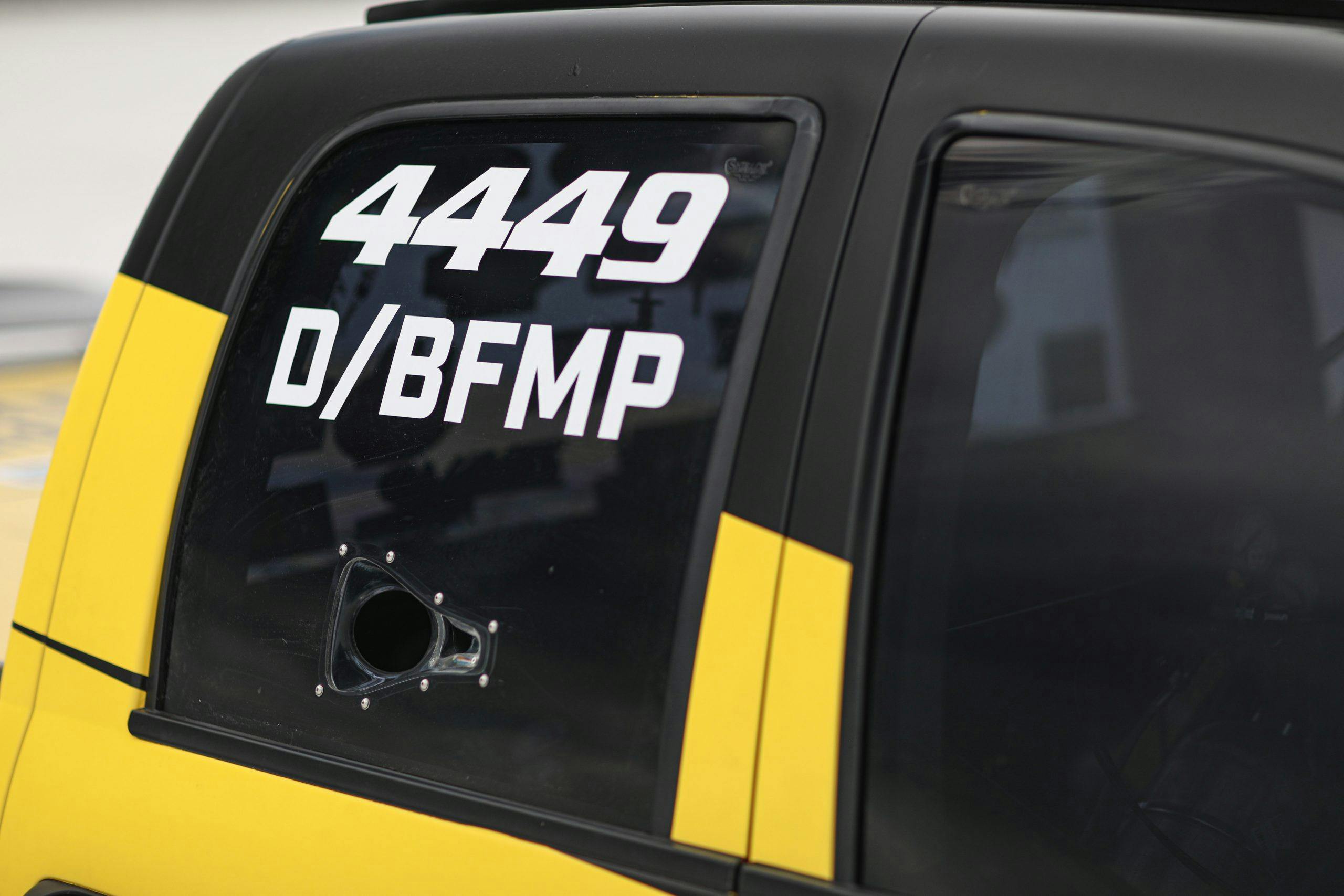



I used to work for Rick and Del Markle. I ripped the whole stock interior out of this truck and fabricated the first “tonneau cover” for the bed. It used to have a 300gal water tank in the bed for engine cooling and ballast. Rick Markle is a master fabricator and did one helluva job fabricating that front bumper and valence.